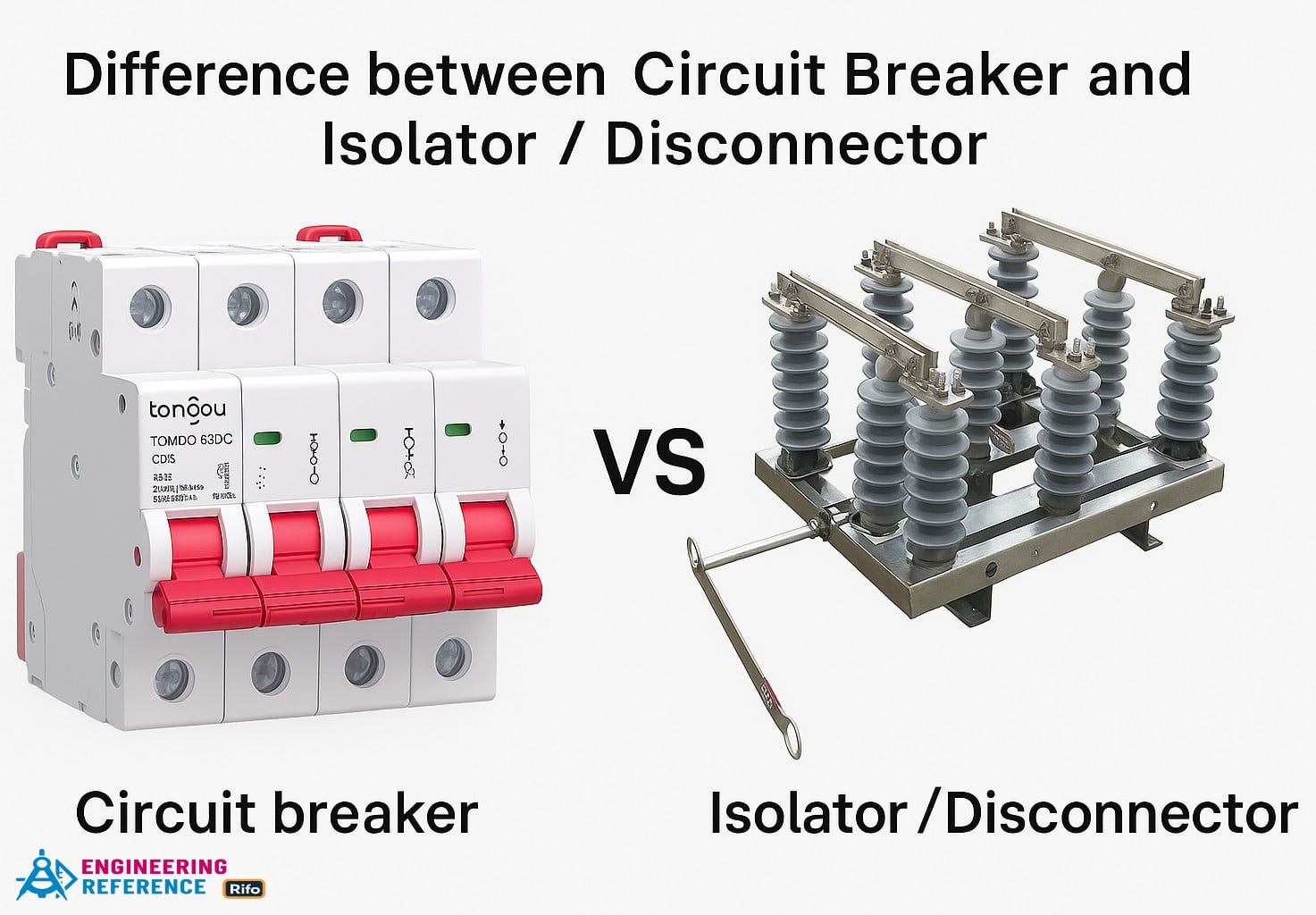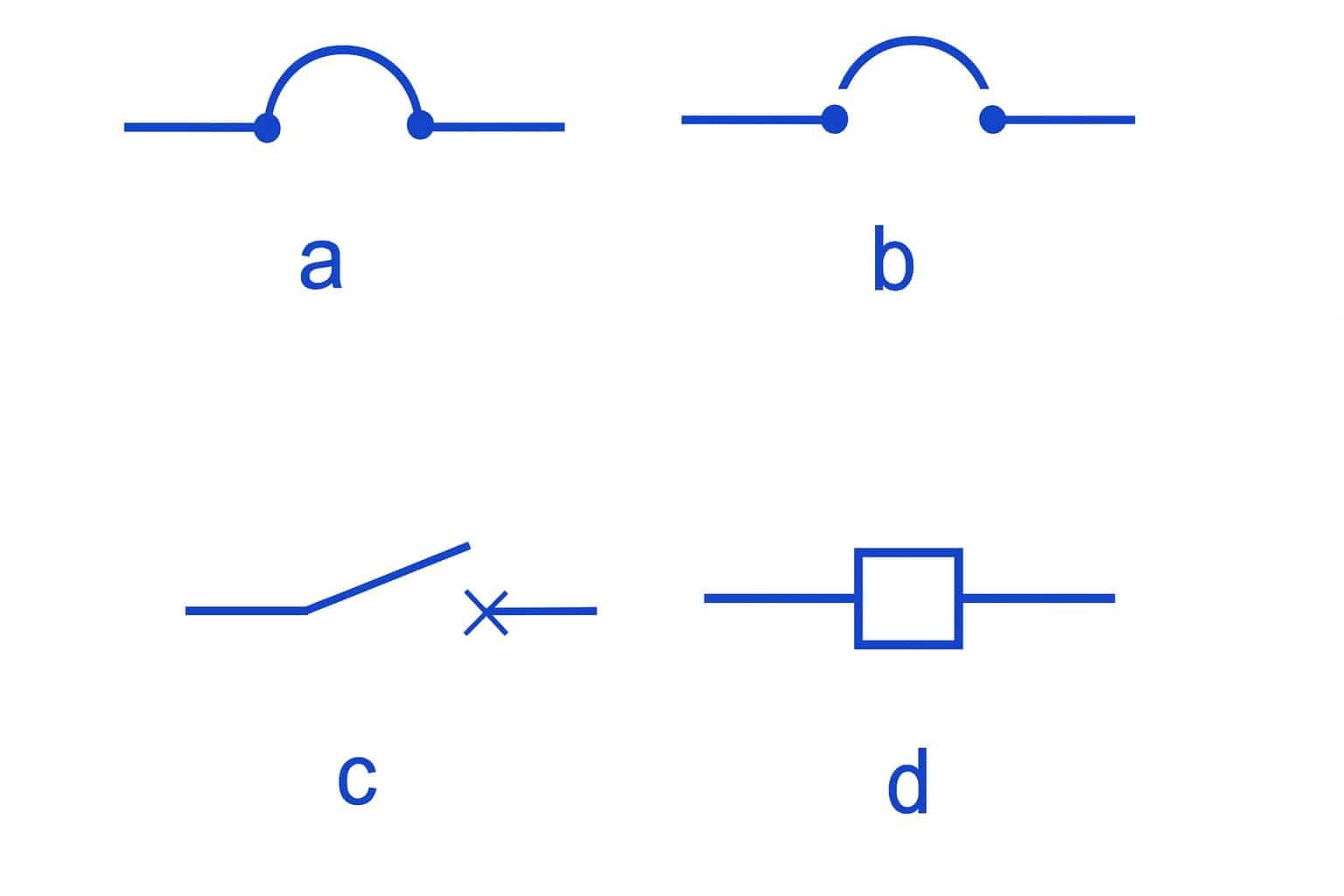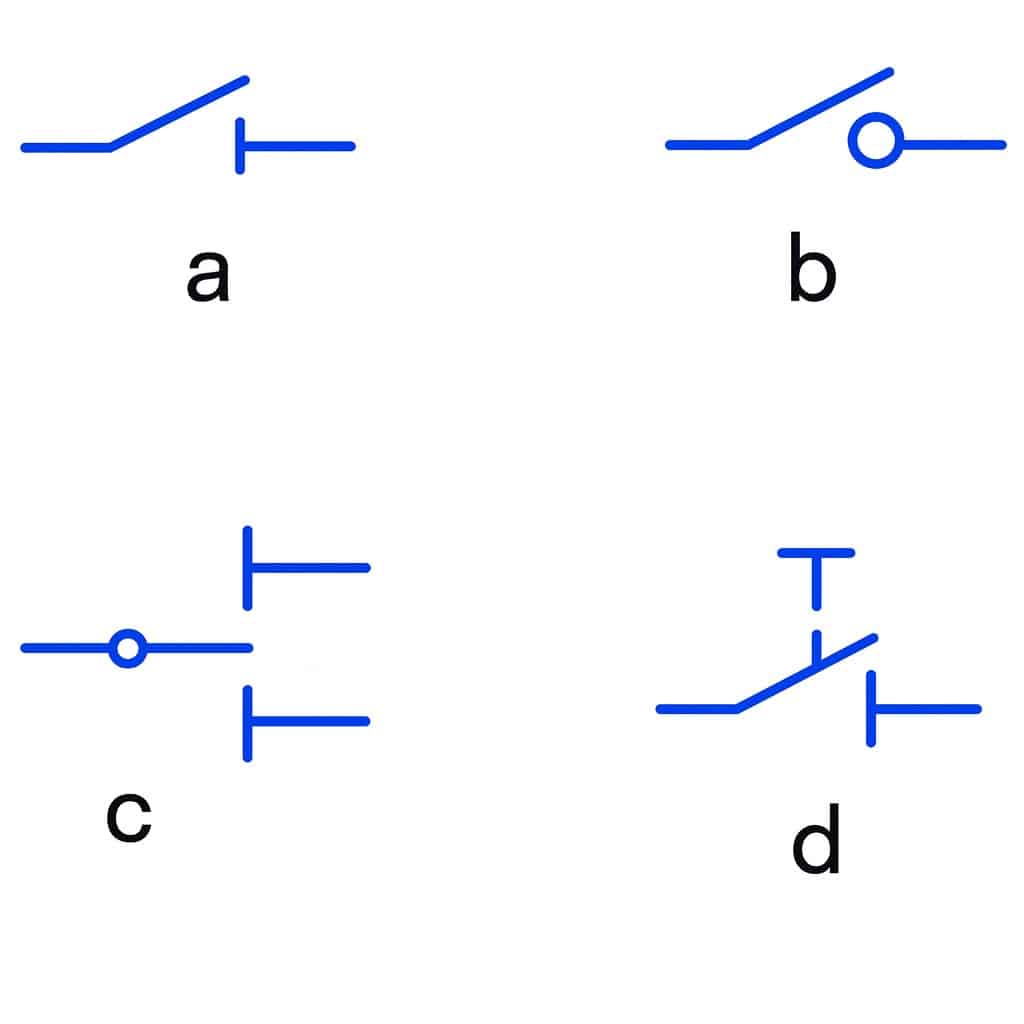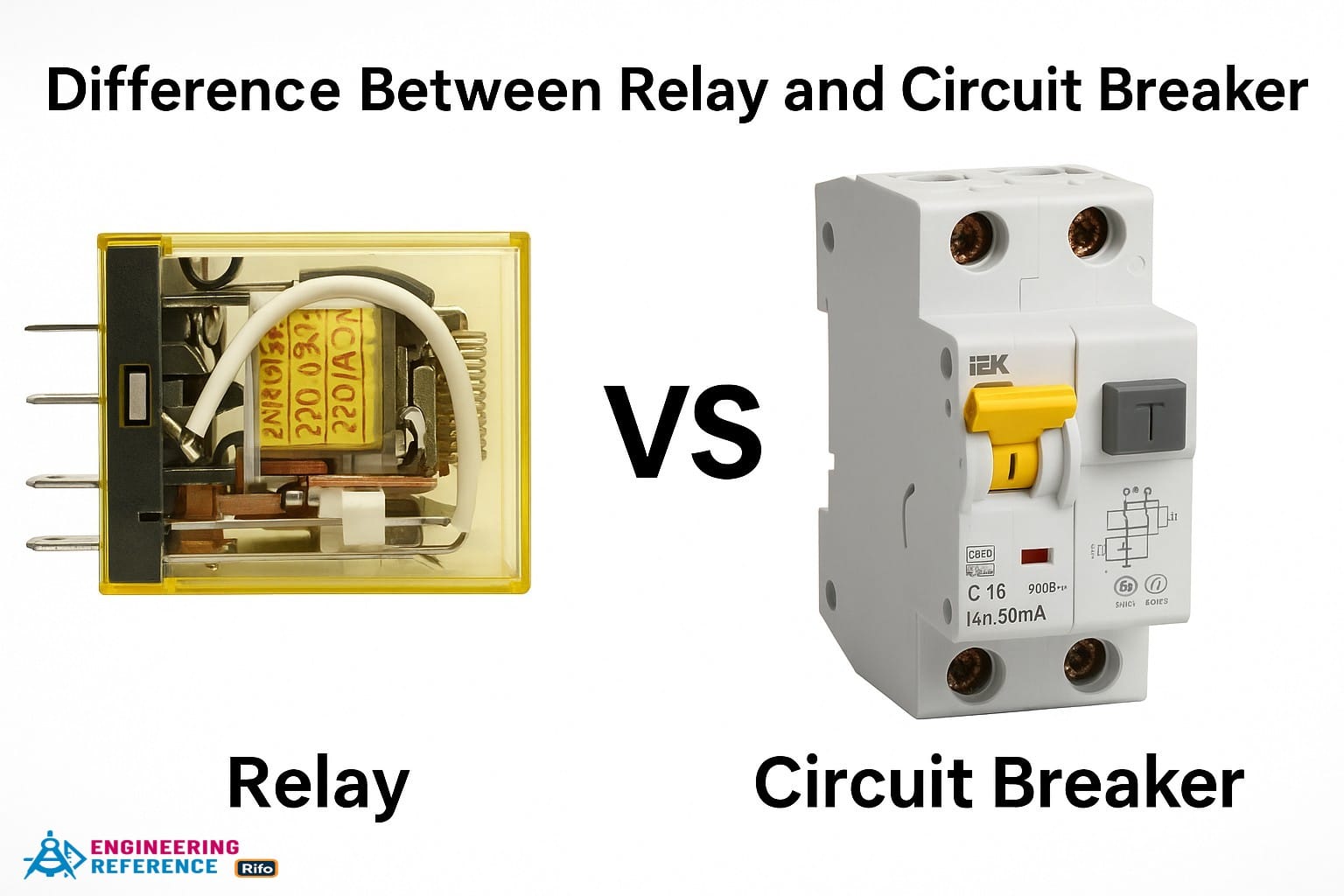Difference Between Circuit Breaker and Isolator / Disconnector
Electrical safety is something everyone understands is important, but many people don’t know much about the different devices that help keep electrical systems safe. The term switchgear refers to a group of essential electrical devices designed to control, protect, and isolate power equipment. Among these, the two most common are the Circuit Breaker and Isolator / Disconnector. Both are found in nearly every electrical power system and play a major role in maintaining safety and reliability.
A circuit breaker and an isolator may seem similar because both are used to stop or separate the flow of current in a circuit. However, their actual purpose and how they operate are quite different. The circuit breaker is used to automatically interrupt current during a fault, such as a short circuit or overload, while the isolator is meant to manually disconnect a section of the system for maintenance or inspection. In simple terms, you can think of a circuit breaker as a safety guard that reacts instantly to danger, while an isolator acts like a lock that ensures the system stays safely open before any repair work begins.
Because both devices involve breaking electrical connections, people often mix them up or assume they do the same job. In this article, we’ll clear up this confusion by explaining the difference between circuit breakers and isolators, showing how each one works, when it should be used, and why both are vital to safe electrical system operation.

Watch This Video to Clearly Understand the Difference Between Circuit Breaker and Isolator!
What is a Circuit Breaker?
A circuit breaker is a safety device that works like an automatic switch to protect an electrical system from damage. It is installed in series with the circuit so that it can interrupt the flow of current whenever a problem, or fault, occurs. The main job of a circuit breaker is to protect against short circuits and overloads, which can cause overheating or fire. To detect these faults, a relay system is used. When the relay senses abnormal current, it triggers the circuit breaker to open the circuit and stop electricity from flowing, keeping both the wiring and connected equipment safe.
Circuit breakers can operate in two ways: automatically when a fault is detected, or manually when switched by an operator. They also include an arc extinguishing system, which helps them safely interrupt the current even when the circuit is carrying load. This makes them suitable for use during live operation, unlike simple switches. Circuit breakers are commonly installed with heavy electrical equipment such as transformers, generators, and motors, and they are designed to handle high current levels without failure—much like a strong gate that instantly closes when it senses danger.
What is an Isolator / Disconnector?
An isolator, also known as a disconnector, is a type of switchgear used to completely disconnect a circuit or part of it from the power supply. It is designed to operate only under off-load conditions, meaning it can be used only when no current is flowing in the circuit. This is the key difference between an isolator and a circuit breaker, which can interrupt current even during a fault.
Isolators are mainly used during maintenance or repair work. Before technicians start working on electrical equipment, the isolator is opened to ensure that no current can reach the section being serviced, keeping both people and equipment safe. You can think of it as a lockout switch that ensures the system stays completely de-energized before any work begins.
An isolator is installed separately within the circuit for safe access to faulty parts. The most important rule when using it is that no current should be flowing through the device while it is being operated.
Characteristics of Circuit Breaker and Isolator
Although both circuit breakers and isolators belong to the switchgear family, each has distinct features that make it suitable for specific roles in electrical systems. Below are their key characteristics:
Circuit Breakers
-
Surge protection: Designed to guard circuits against overcurrent or fault conditions, circuit breakers automatically cut off power when too much current flows, preventing damage and reducing fire risk.
-
Interrupting capacity: Rated by how safely they can interrupt fault current, even under heavy load conditions.
-
Tripping mechanisms: Use thermal, magnetic, or combined systems to sense overloads and trigger automatic disconnection.
-
Resettable: Unlike fuses, circuit breakers can be manually or automatically reset after tripping, allowing quick restoration of power.
-
Wide application range: Used across low-, medium-, and high-voltage systems, from household wiring to large industrial plants and power transmission networks.
Isolators / Disconnectors
-
Isolation function: Provide physical separation of a circuit or equipment for safe maintenance or inspection.
-
No current interruption: Operate only under off-load conditions, meaning they cannot break current during normal operation.
-
Visible open/closed state: Often include a visible indicator showing whether the circuit is open or energized, giving workers clear confirmation of safety.
-
Manual operation: Usually operated by hand, ensuring complete control during disconnection.
-
Limited fault handling: While they can withstand some fault current, isolators are not meant to interrupt faults—that role belongs to the circuit breaker.









